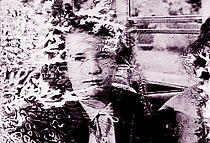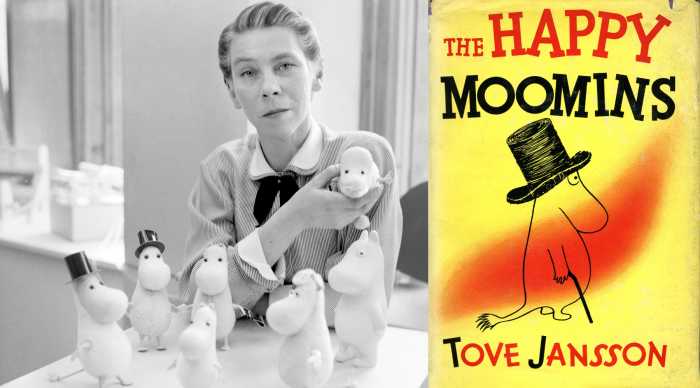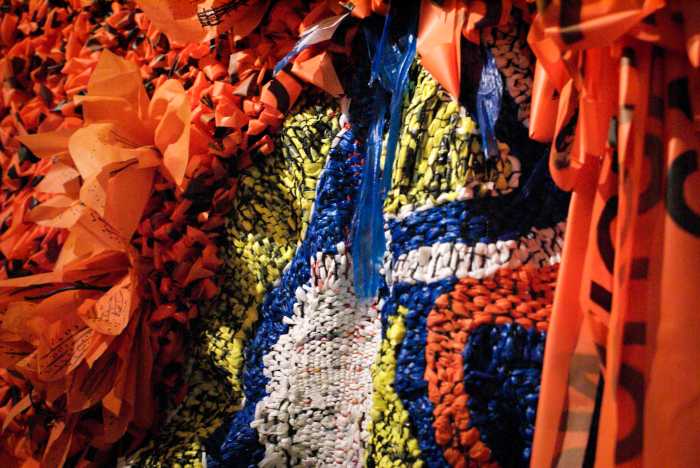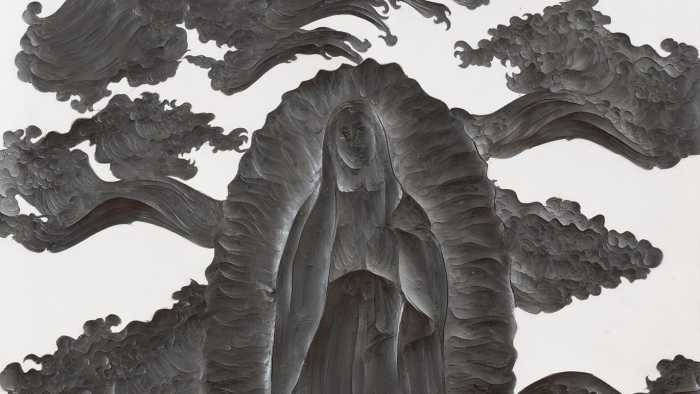Arts at St. Ann’s opens its 25th anniversary
season with a unique event composed of decomposing film and music.
"Decasia" is a one-of-a-kind collaboration between
filmmaker Bill Morrison and composer Michael Gordon. The presentation
of their new work at St. Ann’s Warehouse in DUMBO, from Sept.
9 to Sept. 12, will be the first live performance in the United
States of what composer Gordon calls "a kind of music and
film extravaganza."
With musicians on a two-level scaffold that will literally surround
the audience, and images projected on multiple screens around
the space, the aim of the production, directed by Bob McGrath,
is for the viewers to have a completely different aural and visual
experience.
The film "Decasia" is an existential riff on decay
and decomposition – personal, historical and cinematic. Composed
of degraded film stock from various sources, the film can certainly
be viewed as abstract. But it also has a linear quality to it
and in fact, has a narrative thread, which moves along to Gordon’s
score. The film is actually a sort of cinematic composition.
With archival footage of all sorts that is in some way decomposing
– scratched or burned – Morrison creates a meditation on existence
itself. He has put it together with an enormous amount of care
and attention to detail.
Framed by a Sufi dancer (also known as a whirling dervish), "Decasia"
travels through birth, death, salvation and more. The second
scene of the film is comprised of film reels bathed in some sort
of solution, so that the viewer is aware that "Decasia"
is also an experimental exploration of the history of cinema.
Each piece of footage confirms Morrison’s point: camels are led
across the desert, forming a caravan of men and animals going
towards a future. Young schoolchildren line up for their lessons.
Babies are born; men are rescued from certain death. All of these
scenes occur against burnt-out or destroyed sections of film.
The damage to the film already existed – that is, the filmmaker
didn’t do any physical manipulation to the frames. In putting
it together, Morrison searched for images in varying states of
decay, and most of the footage is old nitrate film (the kind
that burns easily).
"I would try to find images of people whose gestures seemed
to defy mortality or would so pointedly ignore it that the decay
licking at the film would serve as an ironic counterpoint,"
Morrison told GO Brooklyn. So the flashes, burning and scratches
become "characters" in the film. This is evident in
a number of scenes, such as a boxer whose punching bag is a scratched
section of the clip. Elsewhere, rides on a merry-go-round emerge
from a mutilated side of the film frame.
"I was interested in images that interacted with the decay,
so that figures and ground were always interrelated," he
said. So Morrison assembled shots that illuminated the idea of
struggle. The images do reach a climax of sorts, and then familiar
images return to bring the film to its end, with a story having
been told.
Gordon’s score helps to give the film its linear movement, and
it sets up and eases the tension throughout. The two parts of
this project were created simultaneously, but separately for
the most part. The two artists were commissioned by the Basel
Sinfonietta in 1999 to make a symphony with projected images.
According to Morrison, the two shared thoughts on the idea of
decay – one dealt with how to apply it to film (which in this
case seems like the easy part) and one investigated how it could
impact music. Morrison started working right away.
As Gordon tells it, "Bill showed me five minutes of rough
footage and that was the inspiration for the entire piece. Then
we worked fairly independently. When I had a chunk of music I’d
invite him to listen." When he made a rough tape of the
music, Morrison cut the film to that track.
At St. Ann’s Warehouse, the music will be played by the 55-piece
TACTUS Contemporary Ensemble from the Manhattan School of Music.
Gordon’s unusual sound for the film includes passages that seem
to be sound effects or even electronic music but they are, in
fact, made with conventional musical instruments. In order to
achieve the sound, he re-tuned the orchestra. For example, the
score calls for three flutes: one is played in tune, one out
of tune – higher than normal, and the third is tuned lower than
normal.
"Basically the whole orchestra is tuned like that for a
very weird sound," he said. "It’s a challenge for the
musicians – to have to play perfectly out of tune – but they
go for it!" He also uses some odd instruments, like contrabassoons,
which have a very low sound, and lots of brass.
The result of Gordon’s finagling is a moving musical journey
that matches Morrison’s film in aesthetic and emotion. Although
they worked separately for the most part, what emerged is a work
with two distinct parts that together form an exceptional third
creation.
Marian Masone is the associate
director of programming for the Film Society of Lincoln Center
and chief curator of the New York Video Festival at Lincoln Center.
Arts at St. Ann’s presents "Decasia"
Sept. 9-12 at St. Ann’s Warehouse (38 Water St. between Dock
and Main streets in DUMBO). Tickets are $40 for Thursday, Friday
and Sunday performances at 8 pm, and Saturday’s performance at
7:30 pm. Tickets are $25 for the 10 pm performance on Saturday.
For tickets call (718) 254-8779. For more information, visit
the Web site at www.stannswarehouse.org.

























